
GuanaData, a project of The Voice of Guanacaste, investigates the public budgets of six municipalities in the country, including La Cruz. What are you going to read about in this investigative report?
- Residents of Los Andes, in the canton of La Cruz, don’t have clean water in their homes. After a budget cut of almost ¢1 billion (about $1.7 million) for 2021, the mayor’s office is looking for international agreements that will grant funds to build the aqueduct.
- Since 2009, the Municipality of La Cruz has had a budget of ¢9 million (about $15,000) to build a new aqueduct. However, it can’t be carried out since it isn’t enough money to complete the work, and additional funds weren’t allocated for 2021 either.
When she was a child, Lidieth Espinoza thought it was normal for all Costa Rican households to boil water before cooking or whenever someone was thirsty. At 18, she heard that the municipality was going to build an aqueduct, and then she realized that her community’s situation was peculiar. Today, at 29 years old, Lidieth and all the residents of Los Andes in the La Garita district still don’t have access to water that is safe for drinking.
“The water problem in the Andes is something lifelong. Our water at home is from a source that isn’t drinkable and comes from a farm. In addition, we share it with several houses so it runs out quickly in the day. Lately, the impact has been greater because before there was more vegetation, but since they cut it down, in the summers we don’t even have that spring,” Lidieth described the situation to GuanData during a telephone interview.
In the canton of La Cruz, as in the vast majority of the country, the Costa Rican Institute of Aqueducts and Sewers (AyA) is in charge of providing water. In addition, in areas far from the center of town, such as the La Garita district, there are rural aqueducts managed by the Communal Aqueduct and Sewer Systems Administration Associations, known as Asadas. The Andes area doesn’t have an Asada, which would work to ensure the supply of drinking water.
The Municipality of La Cruz is aware of this problem. In 2009, the La Garita District Council requested ¢9 million (about $15,000) from the municipality to budget and finally build the aqueduct. However, when the District Council and the Municipal Council approved this amount, neither took into account the cost of materials, labor, or maintenance.
They also overlooked the need for technical studies to locate the springs and streams from which they could draw water or to certify that drilling wells wouldn’t have a negative impact on the environment.
“At that time, the law wasn’t that strict, so as a way to expedite and ensure that the needs of the communities were met, district councils could make more informal requests. Of course, for us now, it’s very obvious that this amount isn’t enough for the work,” stated Karla Valverde, who has been in charge of planning for the Municipality of La Cruz for five years now.
Valverde also explained to GuanaData that the original request came from the District Council and was directed to a rural aqueduct, so the municipality can’t disburse the money and develop the project. They can only transfer the resources returned to development associations where the district council operates for them to use the funds.
Aside from the fact that the ¢9 million is insufficient, there is another challenge. The law establishes that the municipality can only transfer the money to the Asadas if the amount completely covers the project’s construction. This is established by Law 7755 on the Control of Specific Items Charged to the National Budget.
“For this administration, it is extremely important for all of La Cruz to have water. What the municipality is doing at this time is arranging donation initiatives or international agreements that provide us with the rest of the money that we need. Next year’s budget was cut by almost ¢1 billion (about $1.7 million), so it’s impossible for the municipality to provide the rest,” Valverde said.
Valverde admitted to GuanaData that the municipality hasn’t paid special attention to Los Andes either. Instead, they concentrated their efforts on building other smaller aqueducts in places with less technical requirements and smaller populations, such as Piedras Azules in Santa Cecilia. Furthermore, the municipality doesn’t currently know how much money is needed to supply drinking water to Los Andes.
Seeking to get the ¢9 million to be invested within Los Andes, the La Garita District Council requested that the money be used to repair the school cafeteria.
That request was approved, so the budget for the aqueduct will be invested in another project. This means that for 2021, and possibly for as long as the health crisis persists, Los Andes will continue without potable water.
A Pandemic Without Clean Water
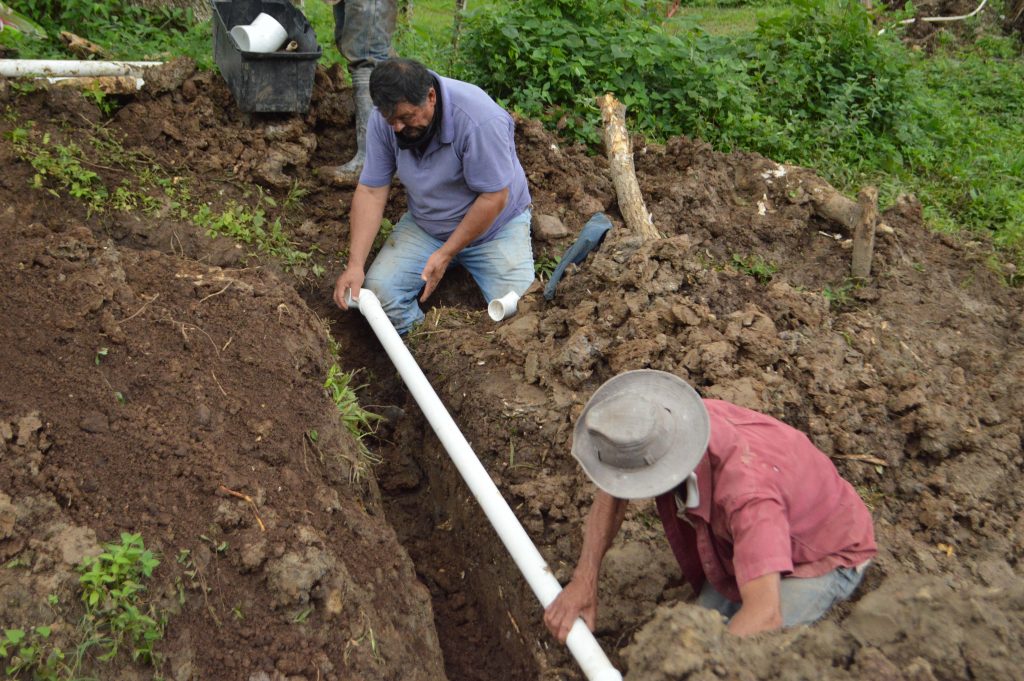
The population of Los Andes will continue to wait for drinking water. The most recent aqueduct developed by the Municipality of La Cruz (and to which these photographs correspond) is that of Piedras Azules, another community in this canton that also had no water. Credit: Municipality of La Cruz.Photo: Municipality of La Cruz.
In Costa Rica, there are four entities that provide potable water services: AyA, which provides service to 49.2% of the population, including the canton of La Cruz; the municipalities, which cover 14.7%, the Public Services Company of Heredia with 4.6%; and the Asadas, with 31.6%, according to data from AyA provided to GuanaData.
The Asadas are community groups that function as non-profit organizations and administer community aqueduct and sewerage systems with the support and coordination of AyA. They usually operate in areas far from the cantonal centers and the municipality can transfer funds to them through agreements with the integral development associations of each district, such as the one in La Garita Centro. Los Andes still doesn’t have an Asada.
“We sorely lack that community organization because if we had one, then we could fight for the aqueduct through them. I think that since we’ve always been without water, people have become accustomed to living like this,” argues Lidieth, who lives in the area.
Lidieth describes Los Andes as a hidden town.
Starting from downtown Nicoya, you have to drive three and a half hours to reach the community. This time estimate is misleading since it can take longer when it rains because cars have to go slower and more carefully on the treacherous gravel road. About 200 people live there, including a significant population of children and senior citizens.
Not a single house has clean water. Through hoses and improvised pipes without filtration systems, residents hook their homes up to different springs that come from grazing areas and run by the stables of several kinds of animals. On average, the farm owners can only clean these stables once a week.
Those who don’t have a water source nearby have to walk to a river. Depending on where the house is located, a person has to walk 300 meters (about 1,000 feet) on average each time they need to bathe, wash their clothes, get water for cooking or feel thirsty.
Lidieth says that this situation has always been frustrating, but her concern grew with the outbreak of the COVID-19 pandemic. In the midst of the health crisis, the need for clean water became imminent.
“Fortunately, the water source from Hacienda la Montaña (a farm in the area) reaches my house. Now that my mother has been sick, being elderly, I made the effort and was buying bottles of water, but it’s too expensive every day,” she explained to GuanaData.
Alexander Martinez, who lives in Los Andes, shares this concern.
“I feel that everyone in town has been careful. We’ve stayed at home and used masks, but water is always going to be a problem. In my house, I have two young daughters, one who’s 3 years old, who likewise, out of necessity, have to drink water from the spring. Even though it isn’t potableI. I’ve got the idea that the body gets used to it and rejects the bad,” Alexander said.
Guanadata tried to contact the Ministry of Health and the Costa Rican Social Security Fund to find out if the lack of drinking water has health implications in these areas but didn’t get a response. However, the World Health Organization (WHO) has repeatedly pointed out already that consuming unsafe water can trigger chronic diseases in the kidneys, anemia, hepatitis and malnutrition.
With the municipal budget cut for 2021, the municipality admits that it can’t promise clean water for Los Andes in the next year. This leaves the community with no other option than to continue consuming water that isn’t fit for human consumption.
Why Hasn’t the Municipality Built the Aqueduct?
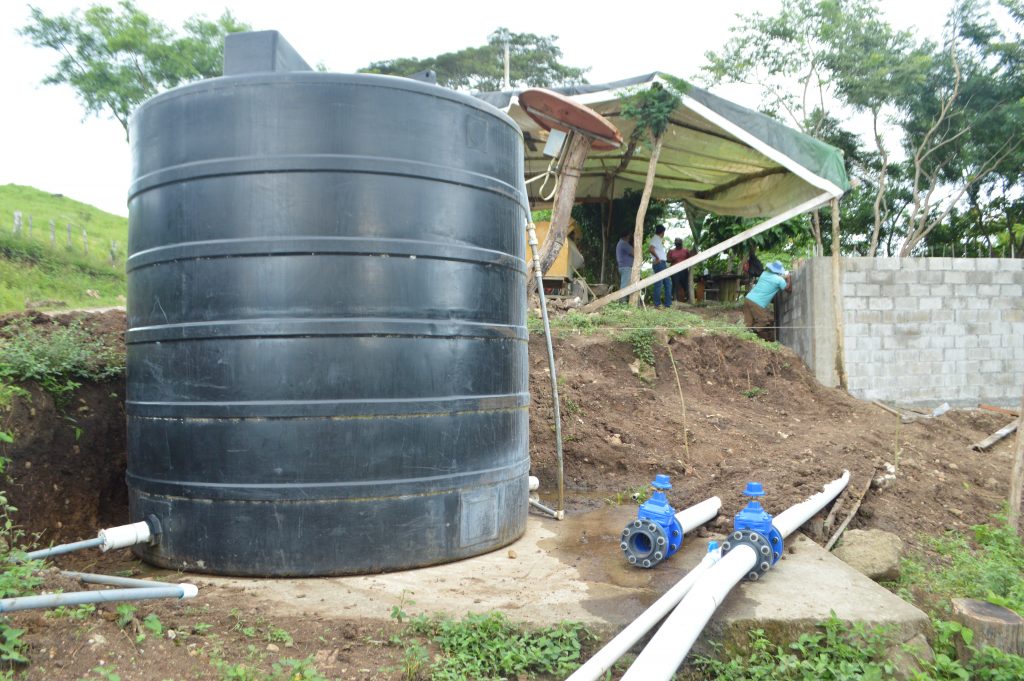
The Municipality of La Cruz admits that it cannot promise clean water for the Los Andes community this year, due to the budget cut. Credit: Municipality of La Cruz.
The municipality of La Cruz has had ¢9 million in its budget since 2009 to transfer to the La Garita District Council to build an aqueduct in Los Andes. However, this amount is insufficient and isn’t enough to cover all of the costs involved in building this type of infrastructure. Even if this money were spent, families like Lidieth’s or Alexander’s still wouldn’t get drinking water.
The La Garita District Council requested this amount more than 11 years ago and the Municipal Council at the time approved it.
In previous years, the cost for the municipality to build an aqueduct for smaller communities was around ¢10 million (about $17,000), but Los Andes has another series of requirements that they didn’t take into account.
Neither council considered the cost of materials, maintenance or technical studies to certify that the place where they would dig the well would have enough water and wouldn’t cause a negative environmental impact.
Seven years ago, the La Garita District Council, the La Garita Center Development Association and the Municipality of La Cruz dug a well near the school in Los Andes, but the source would only have supplied the homes near the school. Also, they weren’t sure if the water came from a stream or a pasture. The project was abandoned.
Also, the municipality, the council or the Asadas can’t use the ¢9 million to finance the technical studies that would eventually allow Los Andes to have an aqueduct.
First of all, because the money is part of a specific budget item, by law, the municipality can’t spend those funds. The council has to be the one to do it. According to Article 11 of the General Law 8173 for Municipal District Councils, “any specific budget item or public transfer of funds for district works or projects must be transferred directly to the municipal district council.”
Since the municipality can’t spend the funds, it must transfer them, but that’s where the second impediment comes into play. The municipality needs to transfer the money for the entire cost of the project, because that is the only way permitted by Law 7755 on the Control of Specific Items Charged to the National Budget.
“Add to this the problem that what the district council requests doesn’t even have to go through the planning department. As a way for this aqueduct to not happen now, in the planning department, we have a new system in which the council has to fill out the project profile, give us pro forma invoices to make sure that the money is going to be enough,” affirmed Karla Valverde, municipal planner for the Municipality of La Cruz. A pro forma invoice is a formal estimate for the cost of goods in advance of the actual purchase.
Valverde explained to GuanaData that the La Garita District Council requested a change of destination to invest the ¢9 million in repairs to the school cafeteria. That way, the money stays in the community. The La Garita District Council and the municipality approved investing the ¢9 million that was originally for the aqueduct in building a school cafeteria.
Because the municipality approved this change, the budget for the Los Andes aqueduct became zero and now they have to look for the full amount of funding. Valverde told GuanaData that the municipality is making an effort to join international agreements, but since they aren’t sure if they’ll be able to carry them out, she preferred not to provide names of associations yet.
The municipality has already used this agreement system to receive funds on previous occasions. The most recent was the agreement with the integral development association for the district of Santa Cecilia in October of this year.
In that agreement, the association provided ¢10 million (about $17,000) to cover 6 kilometers (3.7 miles) of infrastructure to supply water to Piedras Azules, Belice and Las Marias, all of which are small border communities whose total population is less than 100 people.
Climate Change and Inequality Go Hand in Hand
The lack of coordination of local government entities and not including the residents of Los Andes in their own community’s decision-making are just some of the factors that result in still having unsafe water coming out of Lidieth’s faucet.
Natural phenomena such as El Niño make Guanacaste an area prone to prolonged droughts because even though it does rain, it does so unevenly, with little falling during the dry season and an excess during the rainy season, according to the National Meteorological Institute of Costa Rica. However, according to Karen Chacon, coordinator of the Harmony with Nature chapter for the State of the Nation, the climate crisis affecting the world exacerbates this type of occurrence.
Chacón warns that the effects of climate change and little resilient adaptation to its effects are reflected in a stronger way in communities that have other types of socioeconomic vulnerability.
“Costa Rica has made important efforts to make it so 93% of the population have potable water today, but what hasn’t been compensated for are the inequalities between its users. Potable water coverage is higher in urban areas than in rural areas, and the percentage of access to water chlorination systems in urban areas is more than 90%. In rural areas, like in cantons like Bagaces, they are less than 70%,” she explained to GuanaData.
According to the latest Social Development Index from the Ministry of National Planning and Economic Policy (Mideplan), the district of La Garita, to which the Los Andes community belongs, obtained a score of 42.63. In the index, a score of 44.7 is considered “very low” development.
For example, in a community like Los Andes, where the main economic activity is agriculture, the lack of a constant and sustainable supply of water means greater difficulty in being able to work.
In addition, the Health Monitoring Department indicated that consuming contaminated water and dehydration are two of the main triggers for chronic kidney disease.
“We have to understand that the issue of water access must be dealt with from local and state institutions. Lack of water is going to get worse and we need more planning and the creation of public policies designed for 2050. In addition, all this should be accompanied by economic resources that allow us to modernize towards a more equitable infrastructure,” concluded Chacón.


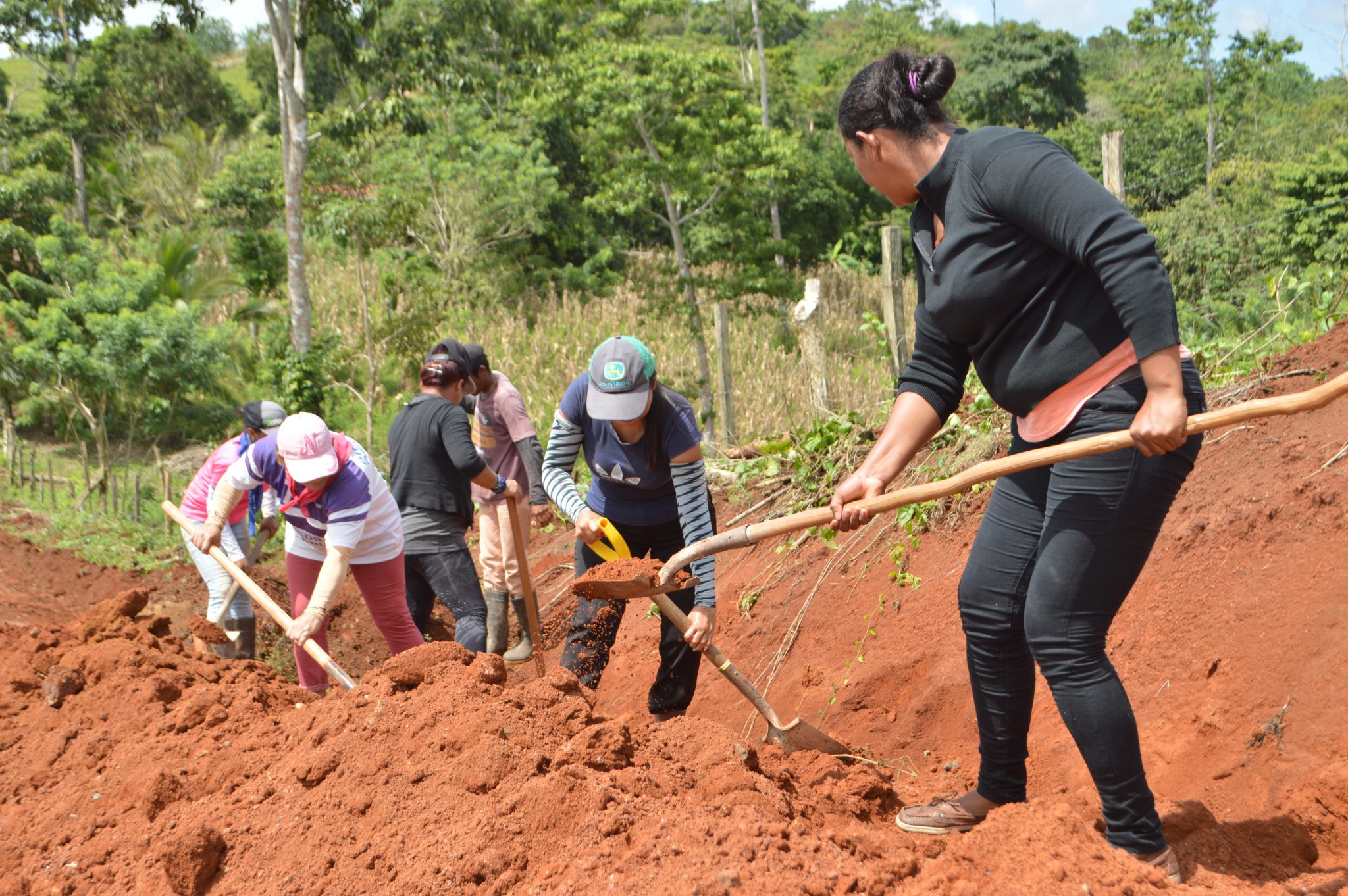
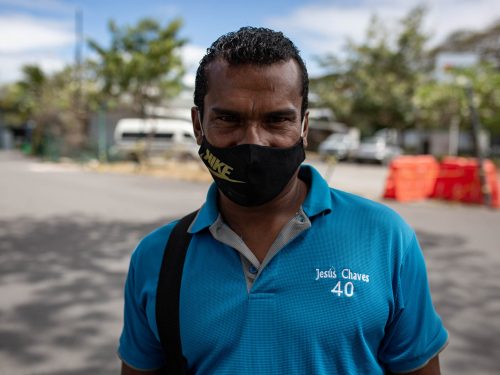
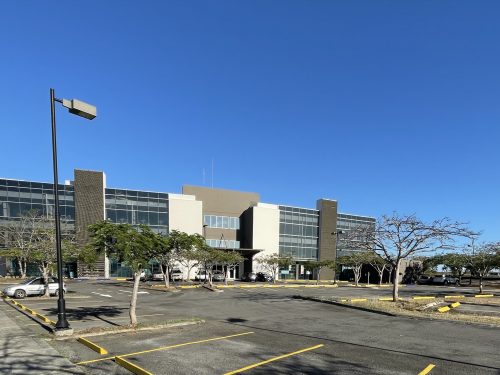
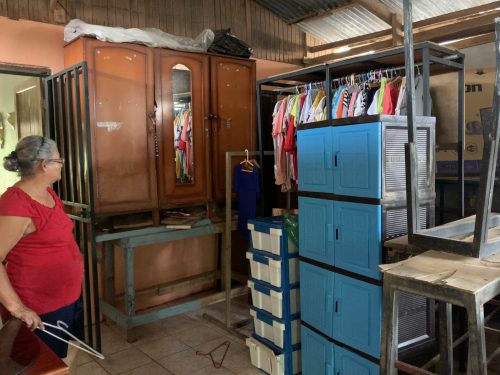

Comments